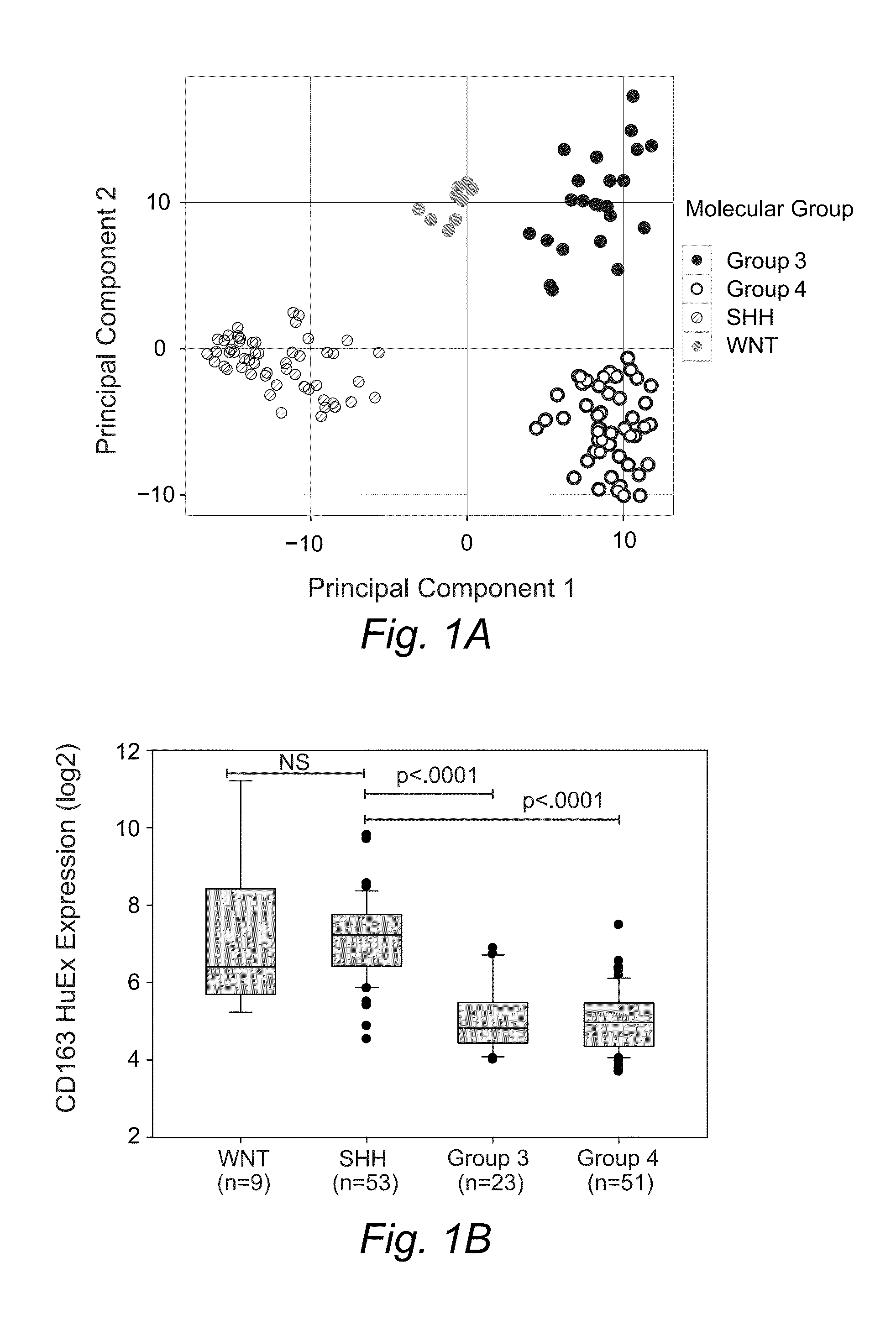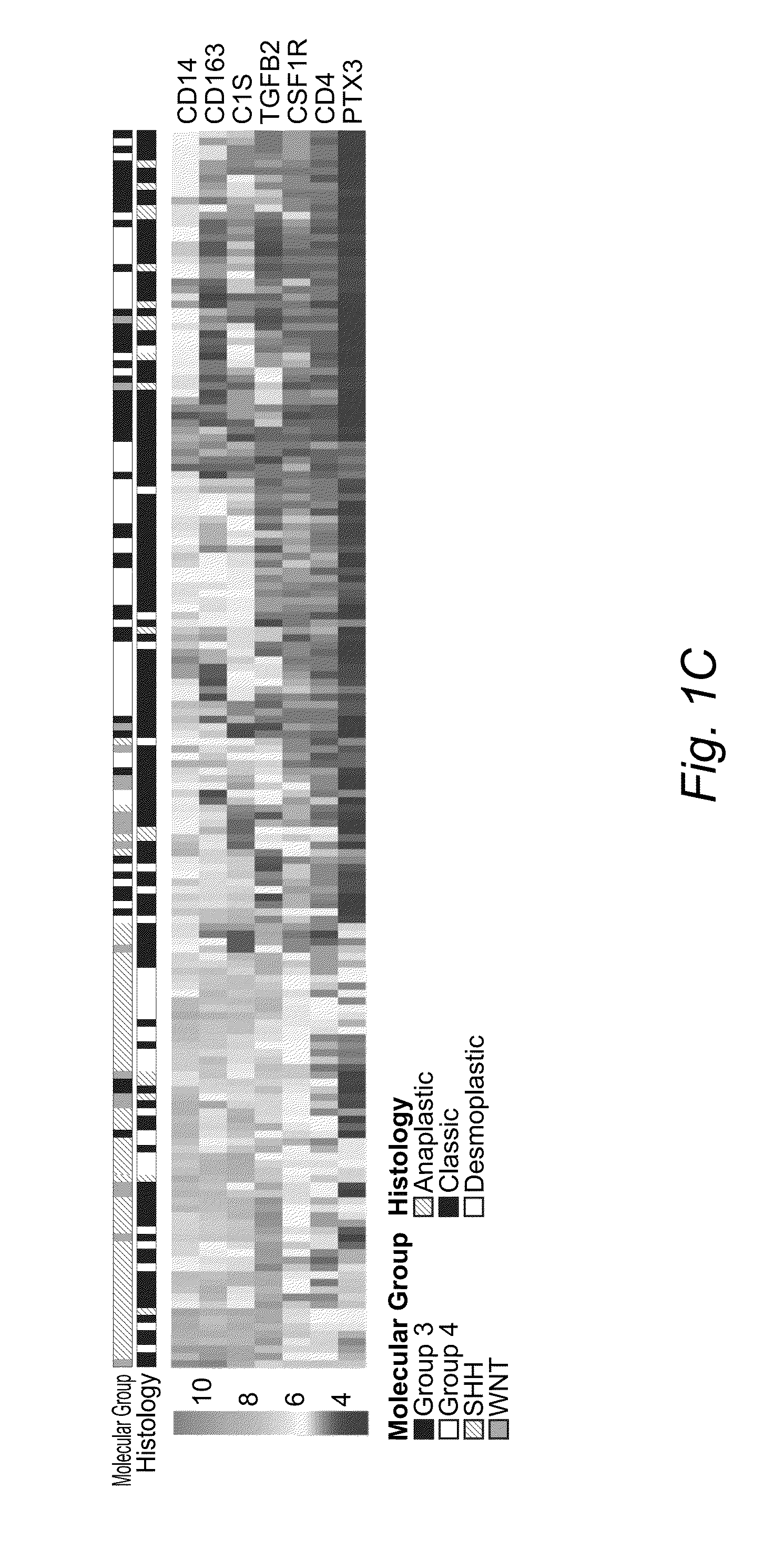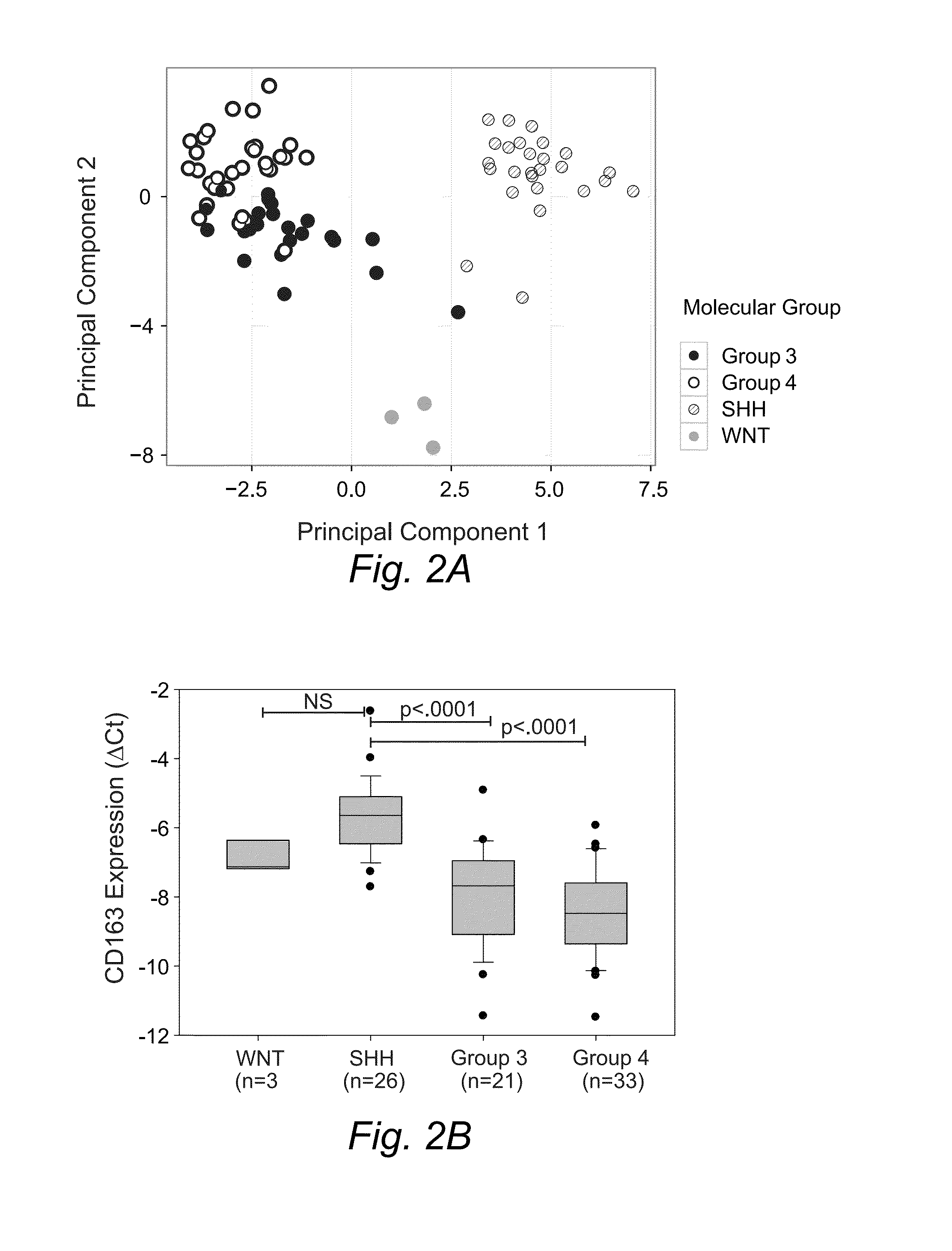Gene signatures to identify molecular subgroups in medulloblastoma tumors
a gene signature and tumor technology, applied in the field of medulloblastoma, can solve the problems of significant adverse long-term neurocognitive effects and endocrine dysfunction, and the difficulty of real-time clinical application, and achieve the effect of reducing radiation therapy
- Summary
- Abstract
- Description
- Claims
- Application Information
AI Technical Summary
Benefits of technology
Problems solved by technology
Method used
Image
Examples
example 1
[0119]Samples were collected from patients with medulloblastoma (primary samples n=85, relapse samples n=2) treated at Children's Hospital Los Angeles (CHLA) (Los Angeles, Calif.) or Cincinnati Children's Hospital Medical Center (CCHMC) (Cincinnati, Ohio) between 1989 and 2012 with available adequate fresh frozen tissue for evaluation. All samples underwent pathologic review by two neuropathologists to confirm the diagnosis. The patient and tumor characteristics are provided in Table 4. Sixty-five samples underwent Affymetrix Human Exon 1.0 ST Array (HuEx) analysis. The data from these 65 HuEx data were analyzed in combination with data from a cohort of 103 samples (FIG. 5 and Table 6). Additional 36 samples and a subset of HuEx samples with sufficient RNA (n=47 of 65) were analyzed using a custom medulloblastoma-specific TLDA assay (total n=83, Table 5). The details of analyses performed on the HuEx microarray and the custom TLDA assay data are provided herein. ...
example 2
Inflammation-Related Genes in Medulloblastoma Molecular Subgroups
[0135]We sought to identify inflammation and immunology-related genes that were differentially expressed among the molecular subgroups using HuEx gene expression data (n=168). We identified greater expression of inflammation-related genes (CD14, PTX3, CD4, CD163, CSF1R, TGFB1) in tumors of the SHH molecular subgroup compared with those of the Group 3 and Group 4 subgroups (FIG. 1C). Several of these genes have been shown to play an important role in the microenvironment of other tumors types, and in some cases have prognostic significance. (Jensen T O, et al. Macrophage markers in serum and tumor have prognostic impact in American Joint Committee on Cancer stage I / II melanoma. J Clin Oncol 2009; 27:3330-7; Locatelli M, et al. The long pentraxin PTX3 as a correlate of cancer-related inflammation and prognosis of malignancy in gliomas. J Neuroimmunol. 2013; 260:99-106). CD14, a monocytic marker present on both circulatin...
example 3
Expression of Inflammation- and Tumor Cell-Related Genes Comprises a Molecular Subgroup Signature
[0137]In order to identify the subgroups in a larger cohort of medulloblastoma patients and to validate expression of inflammation-related genes, we developed a robust and clinically applicable assay using the TLDA technology, a system currently being evaluated in neuroblastoma and utilized in breast cancer clinical trials (Espinosa E, et al. Comparison of prognostic gene profiles using qRT-PCR in paraffin samples: a retrospective study in patients with early breast cancer. PLoS ONE. 2009; 4:e5911; Vermeulen J, et al. Predicting outcomes for children with neuroblastoma using a multigene-expression signature: a retrospective SIOPEN / COG / GPOH study. Lancet Oncol. 2009; 10:663-71). We built a medulloblastoma-specific TLDA card containing 39 tumor-related and 6 inflammation-related genes (CD163, CSF1R, MMD, CD4, ALCAM, CXCR4) that were observed as significantly deregulated among medulloblasto...
PUM
| Property | Measurement | Unit |
|---|---|---|
| cycle threshold | aaaaa | aaaaa |
| cycle threshold | aaaaa | aaaaa |
| TaqMan Low Density Array® | aaaaa | aaaaa |
Abstract
Description
Claims
Application Information
 Login to View More
Login to View More - Generate Ideas
- Intellectual Property
- Life Sciences
- Materials
- Tech Scout
- Unparalleled Data Quality
- Higher Quality Content
- 60% Fewer Hallucinations
Browse by: Latest US Patents, China's latest patents, Technical Efficacy Thesaurus, Application Domain, Technology Topic, Popular Technical Reports.
© 2025 PatSnap. All rights reserved.Legal|Privacy policy|Modern Slavery Act Transparency Statement|Sitemap|About US| Contact US: help@patsnap.com



